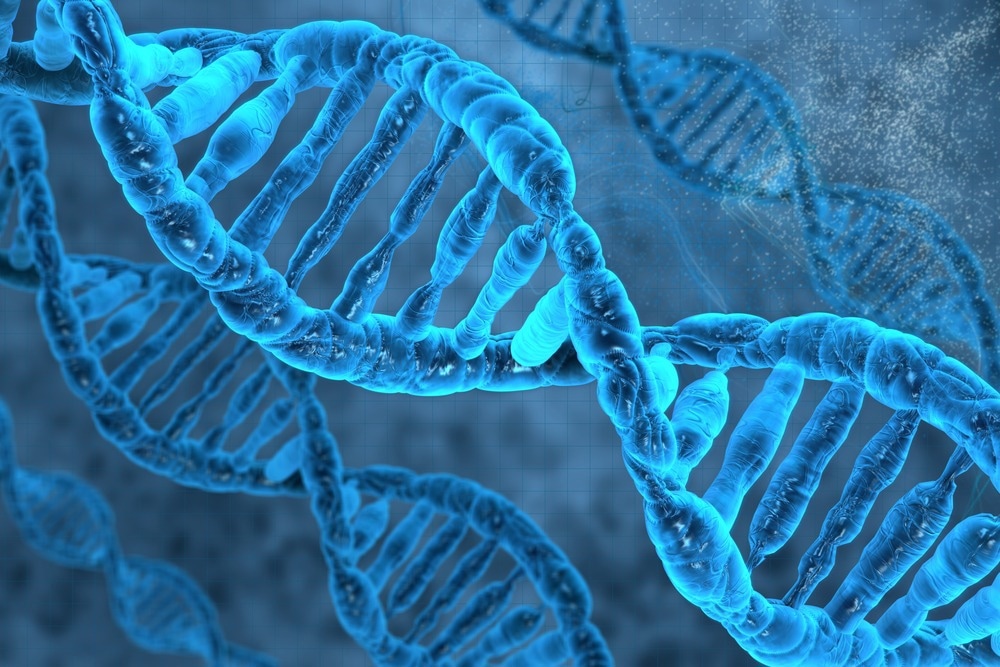Reviewed by Danielle Ellis, B.Sc.Nov 22 2023
Using “optical tweezers” driven by lasers, researchers have discovered a universal motor mechanism that viruses utilize to package their DNA into infectious particles.

Image Credit: vitstudio/Shutterstock.com
The editors characterize the research as a crucial discovery that could significantly change the understanding of the specific roles that individual proteins play in the motor complex and how viral DNA motors function. The research was published as a Reviewed Preprint in eLife. They also say that the results of the study are well supported by the experiments.
A material known as ATP powers the small motors that many viruses, including the human herpesvirus, utilize to bundle their genetic information into pre-assembled shells known as procapsids.
Comprehending the function of these motors is crucial not only for the development of antiviral medications but also for illuminating general bio motor systems pertaining to various cell types’ motors. Using lasers to grasp and manipulate sub-microscopic particles is known as optical tweezers.
Arthur Ashkin invented them initially, and in 2018 he was awarded the Nobel Prize in Physics for this breakthrough. More thorough research on DNA motors, including the function of crucial constituent enzymes known as terminases, has been made possible by these tweezers. The nature of the interactions between motors and DNA, including how the motors grasp DNA and what makes the motor pause or slip, is still mostly unknown.
Studies have suggested that ATP binding causes DNA motors to grip hold of DNA, and the breakdown of ATP into ADP allows its release. To probe this interaction in more detail, we previously developed a modified optical tweezers method to study the motor of a bacterial virus called phage T4, which contains a motor protein called TerL, and showed that ATP not only triggers TerL to grip DNA, but controls the friction between motor and DNA during slipping, too. In this study, we extended this to look at a motor complex containing TerL plus a lesser-understood component protein TerS, to understand how they work together to control viral genome packaging.”
Brandon Rawson, Study First Author and Student, Department of Physics, University of California San Diego
The group looked at the genome packaging motor from the bacterial virus phage lambda, which has a packaging mechanism akin to that of human herpesvirus and contains both TerL and TerS.
These viruses multiply by creating several connected copies of their genome, which must then be divided and packaged individually. A method used by viruses to accomplish this is known as “unit length” genome packaging.
To put it briefly, the TerS component starts packaging when it comes across a particular place in the genome known as cos. After that, until another cos site is reached, TerL cleaves the genome and forces the packaging (DNA translocation) into the procapsid shell.
The motor now comes to a stop, and TerL breaks the DNA to release the particle that has been packaged. It was unclear whether TerS was involved in translocation, despite the fact that TerL’s function in the translocation and termination stages is well understood.
The researchers observed that even in the absence of ATP, there was significantly more frequent DNA grabbing and high motor-DNA friction when both TerL and TerS were present in the same working motor in the same trial. When TerL is the only element present, this has not been shown in earlier tests.
Two methods of motor-DNA interaction—nucleotide-dependent and nucleotide-independent—were shown by the additional increase in grasping and friction that occurred upon the addition of ATP or ADP. The strongest DNA gripping occurred when the motor had ATP connected to it, lower when ADP was attached, and weakest when no nucleotide was bound at all.
The scientists had also found a DNA “end clamp” in earlier phage T4 research, which stops the entire DNA molecule from slipping out of the procapsid during packaging. They discovered in their investigation that the lambda phage uses a similar mechanism. Even in the absence of ATP, the DNA is caught by its end and keeps from separating from the procapsid if it slips to the point where it would fall out entirely.
Our present studies, building on studies of viruses that use different packaging mechanisms, reveal universal features of the terminase motors and suggest a role for the conserved TerS subunit during DNA packaging. These findings support a conserved universal mechanism for terminase motor function, conveyed by the TerL protein, but also highlight a key difference between systems–a much more frequent DNA grip in motors containing TerS, which suggests TerS functions as a sliding clamp.”
Douglas Smith, Study Senior Author and Professor, Physics, University of California San Diego
He concluded, “The separate end-clamp mechanism also increases the efficiency of packaging and is likely equivalent to the complex formed at the initiation of packaging, implying that our method could provide an avenue to explore factors affecting the stability of this complex.”
Source:
Journal reference:
Rawson, B., et al. (2023). The separate end-clamp mechanism also increases the efficiency of packaging and is likely equivalent to the complex formed at the initiation of packaging, implying that our method could provide an avenue to explore factors affecting the stability of this complex. eLife. doi.org/10.7554/eLife.91647.1.